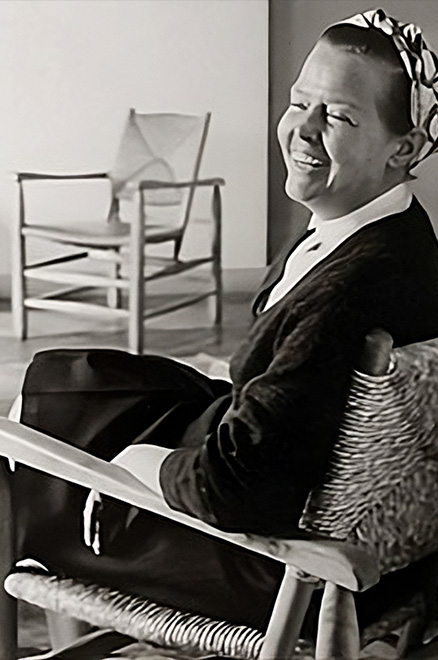Checkout using your account
This form is protected by reCAPTCHA - the Google Privacy Policy and Terms of Service apply.
Checkout as a new customer
Creating an account has many benefits:
- See order and shipping status
- Track order history
- Check out faster
Charlotte Perriand Nemo Products
Charlotte Perriand: icon of modern design
Charlotte Perriand, an iconic name in the 20th century design scene, represents a revolutionary figure who was able to combine aesthetics and functionality, giving life to timeless creations that still furnish our homes today. Born in Paris in 1903, Perriand trained at the École de l'Union Centrale des Arts Décoratifs. Her professional path is dotted with collaborations with the great masters of design, including Le Corbusier and Pierre Jeanneret, with whom she shares the ideal of a functional architecture accessible to all
An innovative approach to design
Perriand stands out for an innovative approach to design, characterized by a constant search for ergonomic shapes and innovative materials. Her creations, often made of tubular steel and wood, are characterized by their essentiality and lightness, perfectly combining aesthetics and functionality. Among her most popular models iconic we remember the CS chair (1928), the transat chair (1934) and the metal kitchen (1929), true works of art that have revolutionized the way of conceiving furniture.
Prestigious collaborations
Over the course of her prolific career, Perriand has collaborated with some of the most prestigious brands in the design sector, including Cassina, Thonet and Nemo. Her creations have been exhibited in important international exhibitions and are now part of the permanent collections of modern art and design museums around the world
The legacy by Charlotte Perriand continues to live on through her works, still produced and appreciated by an international audience today. The Ciat Design catalog , for example, offers a vast selection of her most popular models; iconic, allowing you to furnish your home with timeless design pieces that combine beauty and functionality.
Charlotte Perriand represents a central figure in the history of modern design, a forerunner who was able to combine innovation and tradition, giving life to creations that still fascinate and inspire us today. Her works, an expression of free and non-conformist thought, continue to influence new generations of designers, confirming her immense influence on the contemporary design panorama
Nemo Lighting: a story of innovation and tradition
The Nemo brand, born way back in 1993, represents an international beacon in the design lighting sector, entirely made in Italy. His aesthetic research, oriented towards minimal and modern styles, has its roots in the ancient traditions of historical Italian lighting, spread throughout the world thanks to illustrious designers such as Franco Albini, Vico Magistretti and Le Corbusier. To them, Nemo dedicates the "Masters" collection, a set of timeless icons from the history of Italian design. It is precisely this fusion between the heritage of the past and the innovation of the present that makes the Nemo brand so distinctive in the panorama of designer lighting.
Prestigious collaborations and world-famous designers
In contemporary times, Nemo opens its artistic spaces to valuable designers such as Karim Rashid, Carlo Forcolini, Jehs + Laub, Javier Mariscal, Foster + Partners, Roberto Paoli. These collaborations not only add a touch of freshness and modernity to the collection, but also consolidate the brand's link with excellence in the world of design. Through these partnerships, Nemo continues to write its own history, always remaining at the forefront of creating iconic pieces that define the living spaces of those who appreciate luxury and elegance.
Explore timeless elegance with Nemo Lighting
The Ciat Design catalog offers an extraordinary showcase of Nemo's best creations, spanning both the past and future of lighting design. Among the iconic models that have made the history of the brand, there are lamps such as "Crown Major" by Jehs + Laub and the creations of Karim Rashid. Each piece tells a unique story, combining craftsmanship and technological innovation. Relying on Nemo means bringing home not just a simple illuminating object, but a piece of the history of Italian design, made to withstand the passage of time with style and refinement.

